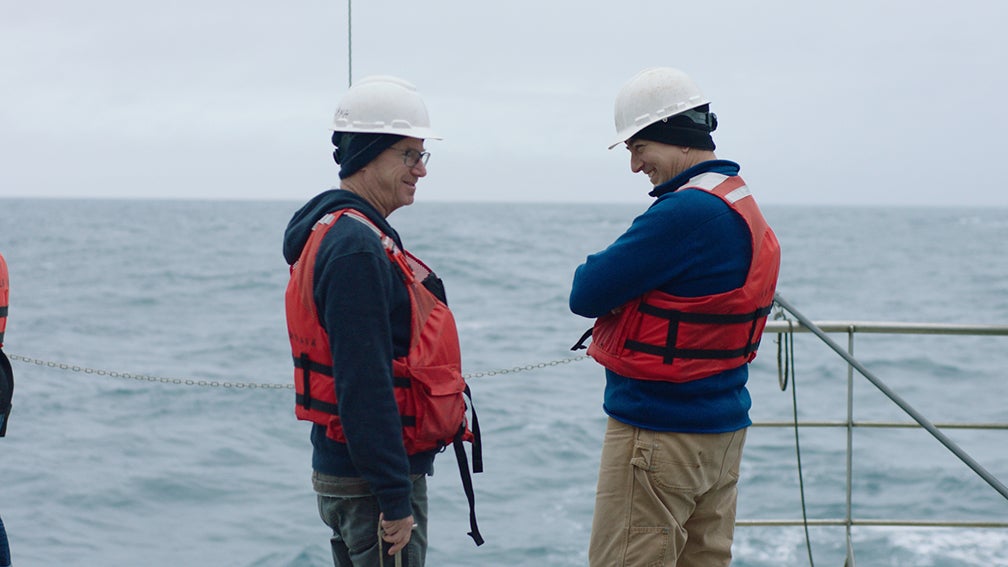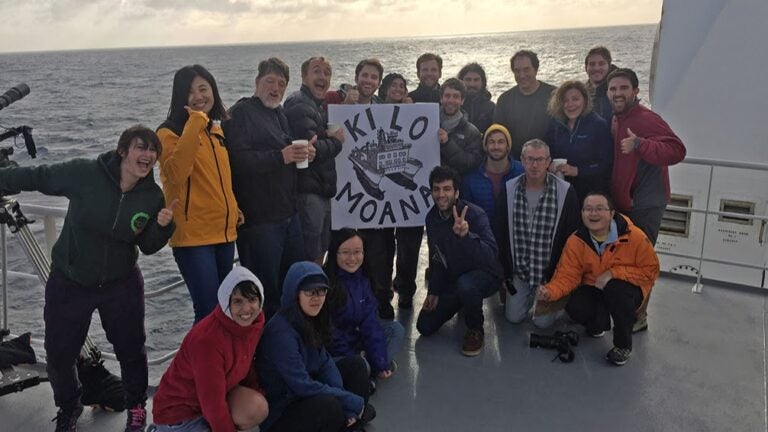
From Hawaii to Alaska: Scientists and educators team up on unique research cruise
USC Sea Grant and the USC Wrigley Institute for Environmental Studies (WIES) are teaming up with researchers from USC and CalTech to advance scientific research and education on how ocean acidification impacts the ocean carbon cycle.
On August 31, the international team of scientists, led by Dr. Will Berelson from USC and Dr. Jess Adkins from CalTech, are wrapping up a month-long research cruise from Hawaii to Alaska aboard the University of Hawaii’s R/V Kilo Moana. During the cruise, they have been sampling sites from sub-tropical gyres to sub-polar waters, conducting experiments on sediment and water from different ocean depths. They chose this route because these are among the most acidic waters in the worlds oceans.
Specifically, the team is studying how the deep ocean neutralizes increased amounts of carbon dioxide (CO2) using the mineral calcium carbonate. As the ocean absorbs more CO2 from the atmosphere, it causes a fundamental change in the chemistry of the ocean. One change is that the ocean uses calcium carbonate to absorb CO2, essentially dissolving the mineral and leaving fewer calcium carbonate molecules available for marine organisms – such as coral, plankton, and shellfish – to use to build structures and shells.
The research team is conducting experiments on the rate at which calcium carbonate dissolves with location-specific variables such as water temperature, salinity, nutrients, and depth. The research team is also collecting samples of sediment and plankton. Sediment, or the mud on the ocean floor, may also be impacted by ocean acidification. As certain shelled plankton, called pteropods, die and sink to the ocean floor, they become part of the sediment. However, with a more acidic ocean, the shells are dissolving before they reach the ocean floor (learn more about ocean acidification here). Analyzing this data along the cruise transect route provides an opportunity to characterize a large portion of the ocean. The research team hopes to answer key questions about changing chemical oceanography and climate change.
USC Sea Grant and WIES are developing educational toolkits using pteropod samples, data, video, and other information collected during the research cruise. The toolkits will be suitable to use by informal education centers, such as aquaria, and classrooms. As the toolkit takes shape over the next few months, it is likely to include not just information about the science of ocean acidification, but also demonstrate the critical collaboration between science and engineering that allows new equipment and experiments to be developed. For example, a new Niskin Incubator was designed by the USC-CalTech team for this cruise, which is providing precise data like never before (see video below).
A research cruise is a unique opportunity for scientists and educators to collaborate, and the idea is to create a toolkit model that can be replicated or adapted by educators working on future research cruises to bring cutting-edge science into classrooms and communities.
WIES is further connecting this work to the public by inviting two cinematographers to participate in the research cruise: USC Cinema graduate student Molly Murphy and independent cinematographer Jacki Moonves. These filmmakers will capture and share the cruise experience, helping to bring this science into classrooms and communities everywhere. Over the month of August, we have been sharing images and posts from the cruise below.
Watch oceanographer Adam Subhas describe a new tool being used on this cruise for conducting ocean acidification experiments, link.
All photos in this article are credited to Jacki Moonves.
Day 1:
Meet C DisK-IV! The team of scientists that will spend a month at sea aboard the R/V Kilo Moana studying the effects of climate change on ocean acidification. Short for “Carbon Dissolution Kinetics,” this is the 4th expedition of its kind led by chief scientists Will Berelson and Jess Adkins. From Hawaii to Alaska, this team will take samples of mud and water from different ocean depths to gain valuable data on changes in Pacifc geochemistry.
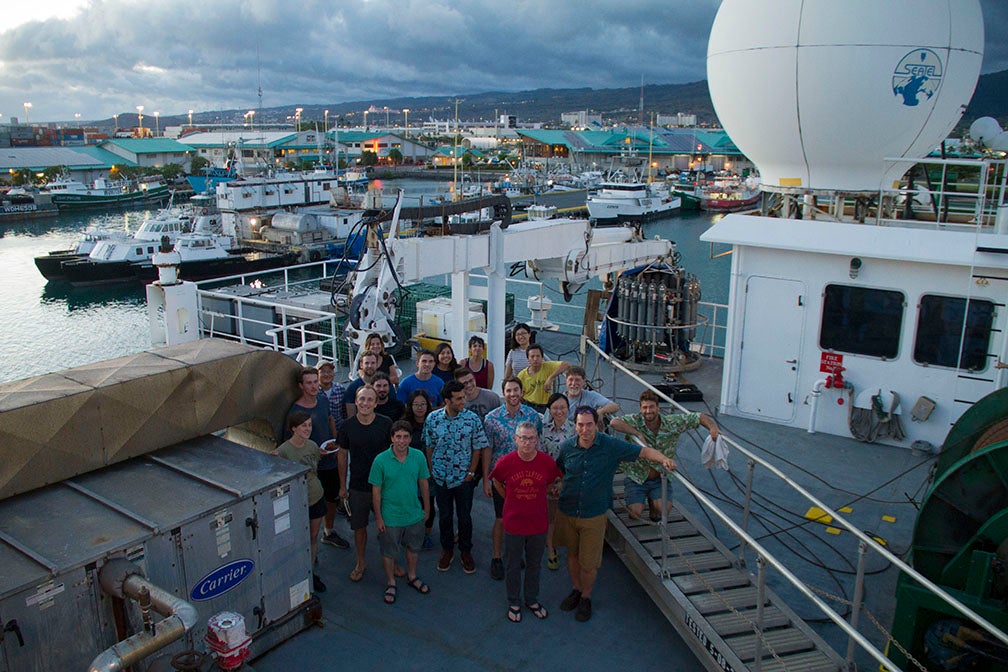
Sven Pallacks, a graduate student from University of Barcelona gazes onto the city of Honolulu as he takes in his last look at land for the next month… For the full month of August, ocean will be the only thing on the horizon for these scientists!
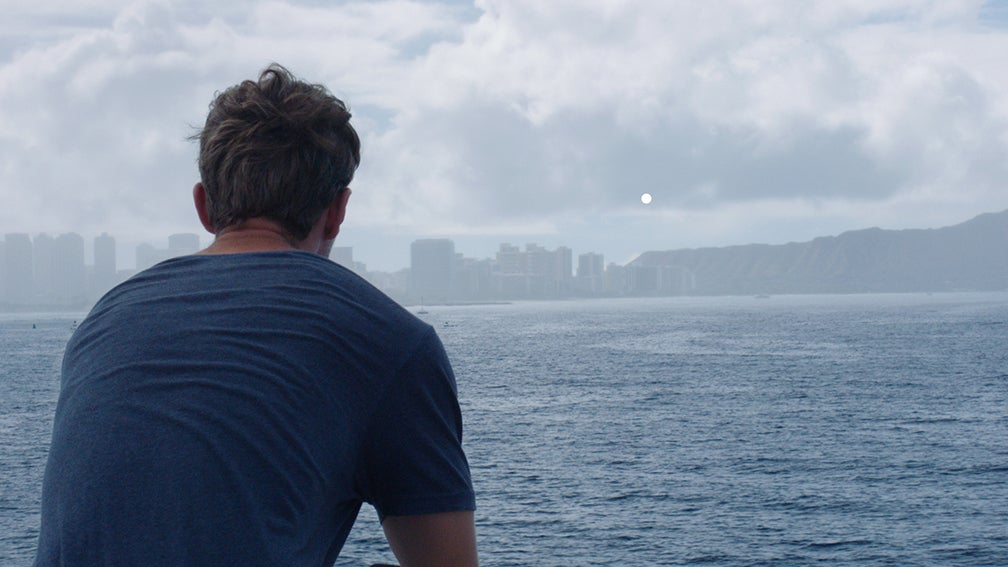
Oceanographer, Adam Subhas prepares the much-anticipated Niskin Incubator for the first of many Pacific plunges! The Niskin Incubator is one of the stars of the show of C DisK-IV’s mission. Designed by the USC-Caltech team, this instrument uses isotope Carbon-13 to measure the dissolution rate of calcium carbonate at different ocean depths. The Niskin Incubator provides precise data like never before and this is the first time it will be used at these research stations! 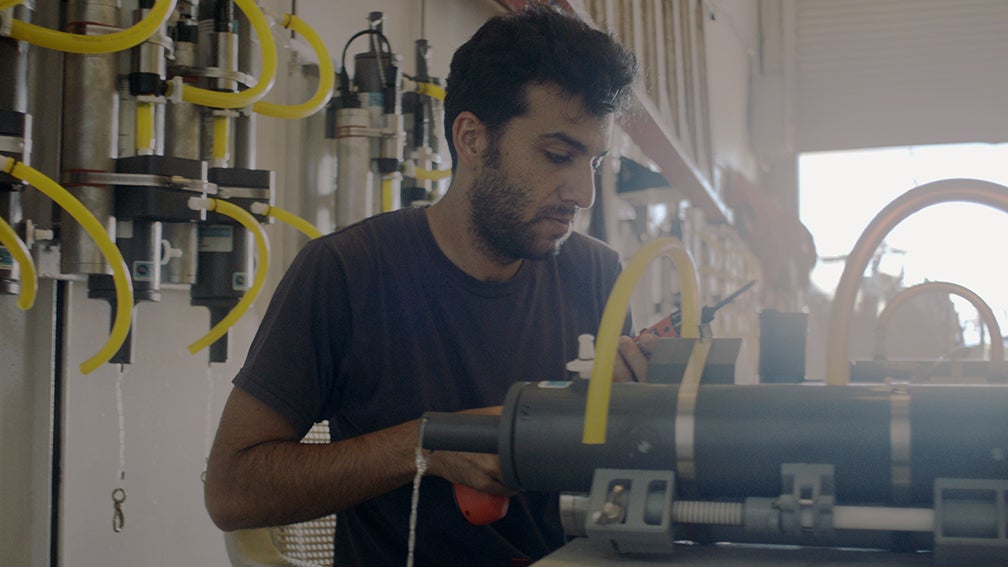
The C DisK-IV team prepares the CTD/Rosette a device that will capture water samples at different depths and records a variety of data such as salinity, temperature, oxygen, and chlorophyll. 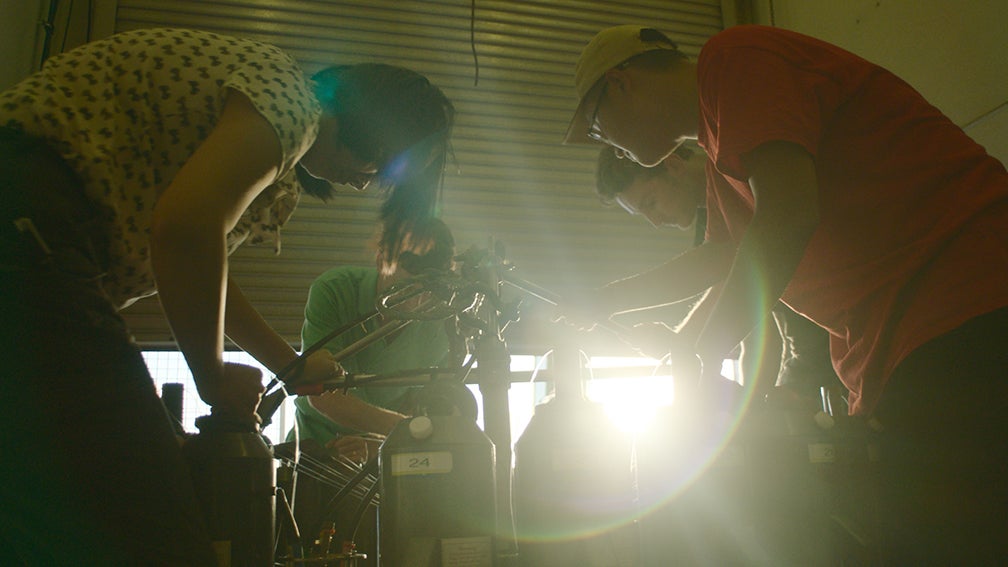
Day 4:
Here, C DisK-IV teammembers prepare a shallow plankton tow. This long net will trail behind a slow-moving Kilo Moana collecting microorganisms at the water’s surface. Tiny as these organisms may be, they are huge players in ocean chemistry and ground zero in the ocean ecosystem.
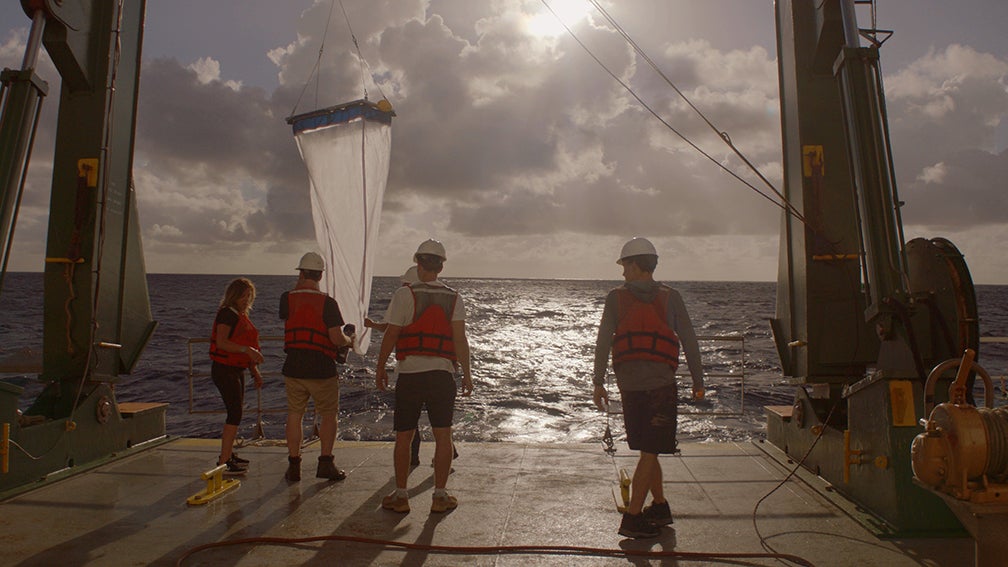
Day 5:
Gilad Antler and James Rae paint their faces with ancient mud as they prepare to study samples taken from the ocean bottom. Thousands of years worth of sediment on their faces, their skin is now baby soft.
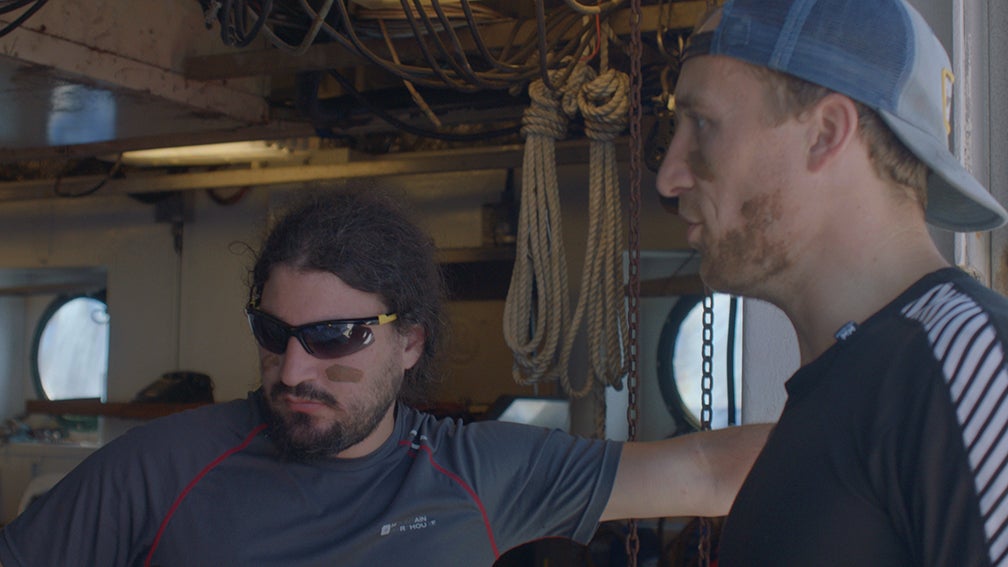
Day 6:
The team wraps up work at Station 2 and prepares for the next! Let’s hope the seas continue to stay this calm for the Kilo Moana
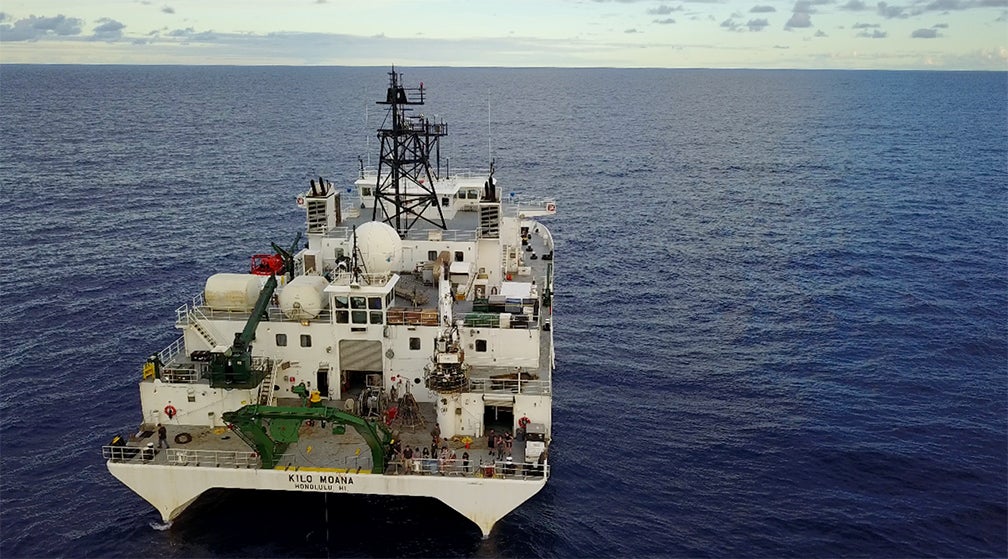
Day 7:
The scientists of C DisK-IV have been working around-the clock unconscionable hours to collect their samples and process data. With 60 hours allotted at each research station (and they’ve since lengthened it to 70!), they pack a tight schedule that leads many to work 24+ hours straight! The workshifts often resembles those of hospital workers, and the care and passion this team dedicates to the health of the ocean often resembles that of a great doctor. This line of work is a test of strength for any scientist, but sunsets like this serve as invigorating reminder of ocean wonders left to discover. C-DisK Cruise from Hawaii to Alaska studying #oceanacidification USC Sea Grant is developing education toolkits with materials and data collected during this cruise.
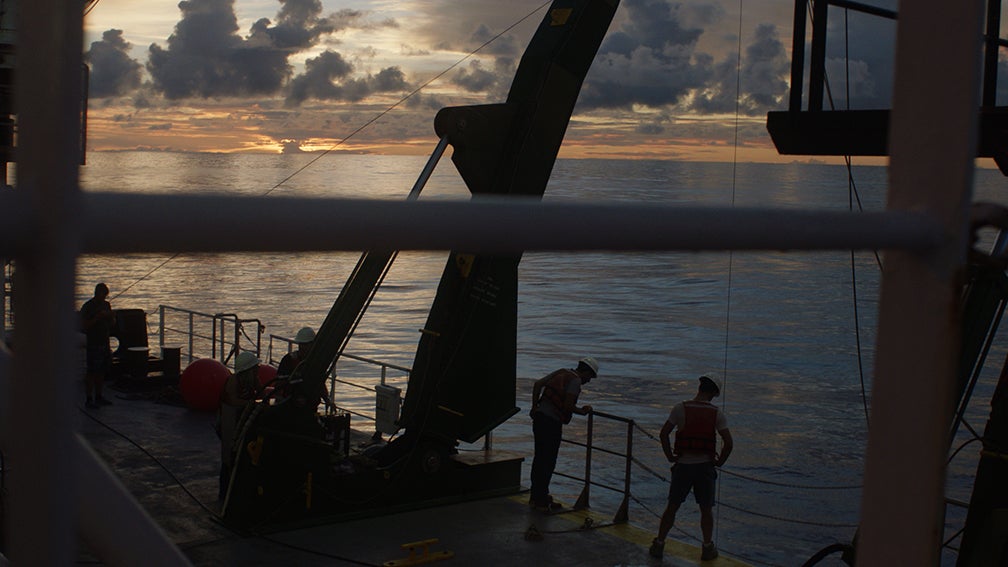
Day 11:
View from a floating array as it drifts away unattached from the Kilo Moana to collect samples from the upper water column. The array carries Niskin Incubators and has been a key part in freeing up the back deck to allow more science to take place the ship. A satellite beacon ensures that C DisK-IV is able to retrieve the Niskins once the study is complete, but there is always risk involved in letting instruments roam free in the vast ocean.
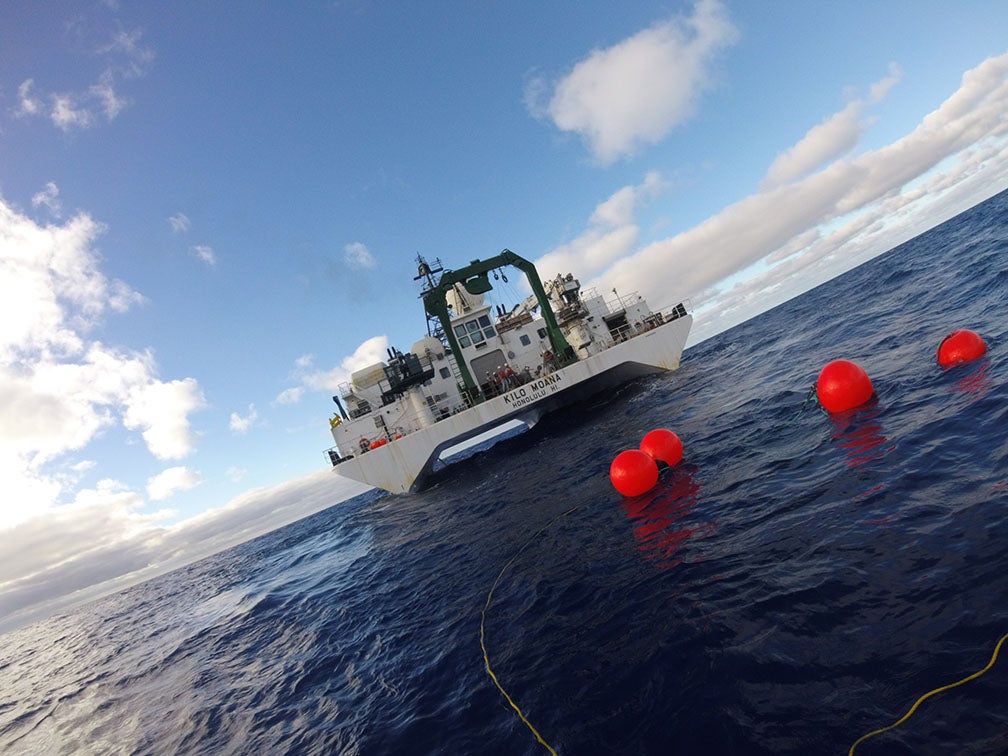
Day 13:
This is one of the coolest things we’ve ever seen! Caught in the plankton tow: a pteropod, or, “butterfly of the sea” catching a bite to eat in the petri dish. These tiny creatures make their snail-like shells out of calcium-carbonate, a compound that dissolves with higher acidity. As the ocean continues to collect more CO2 and further acidify, pteropods could be in danger. Being low on the food chain, their health as a species could have grave effects on the ocean ecosystem.
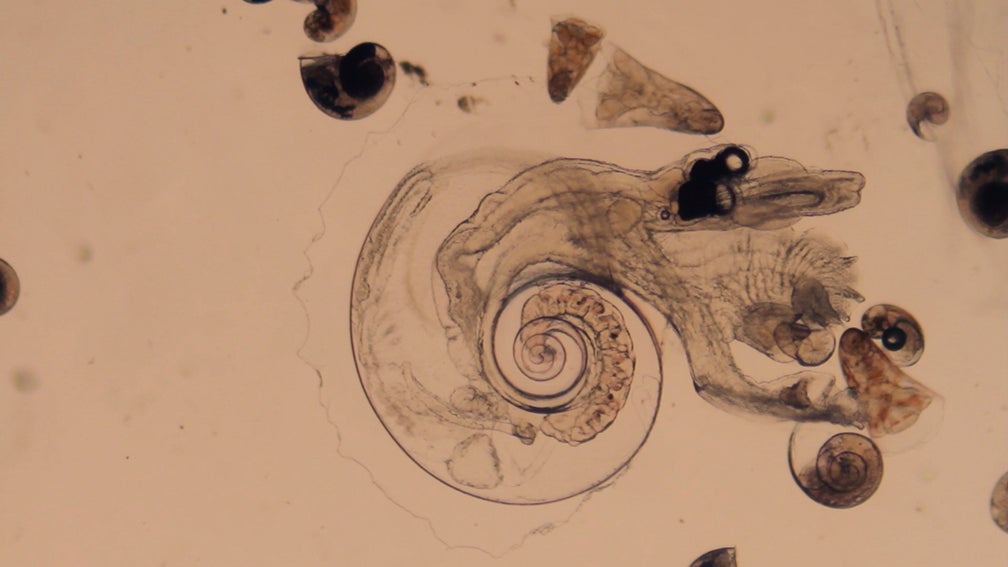
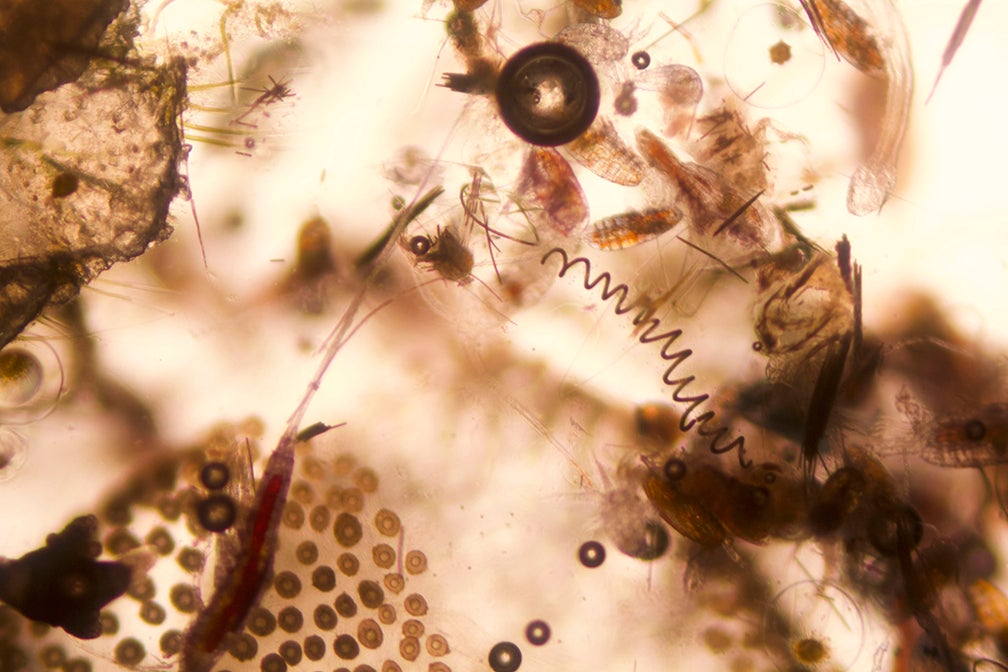
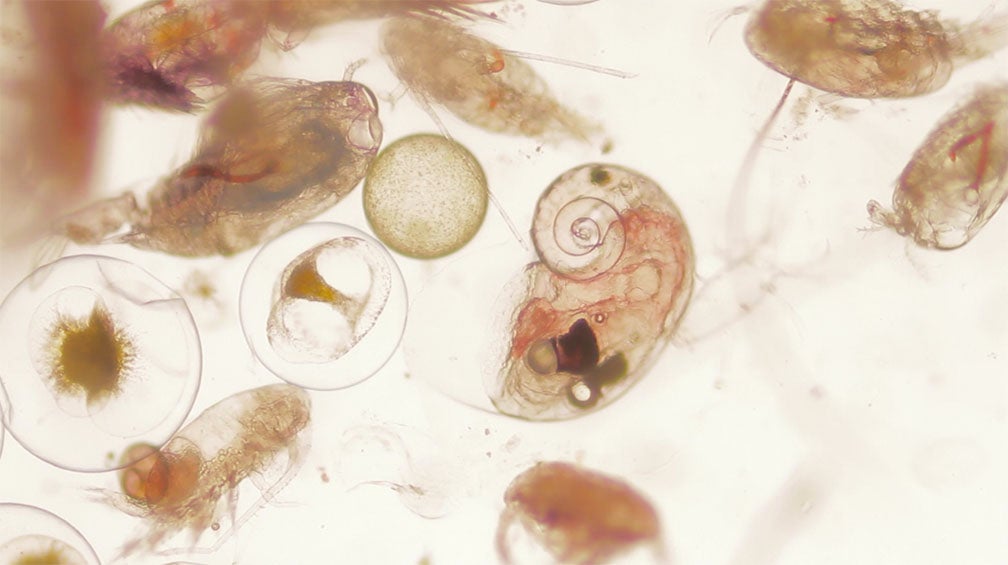
Day 15:
The animator on board begins to wonder what it must be like for the animals living in the waters of scientific interest to see Niskin incubators (among other instruments) come in and out of their habitat.
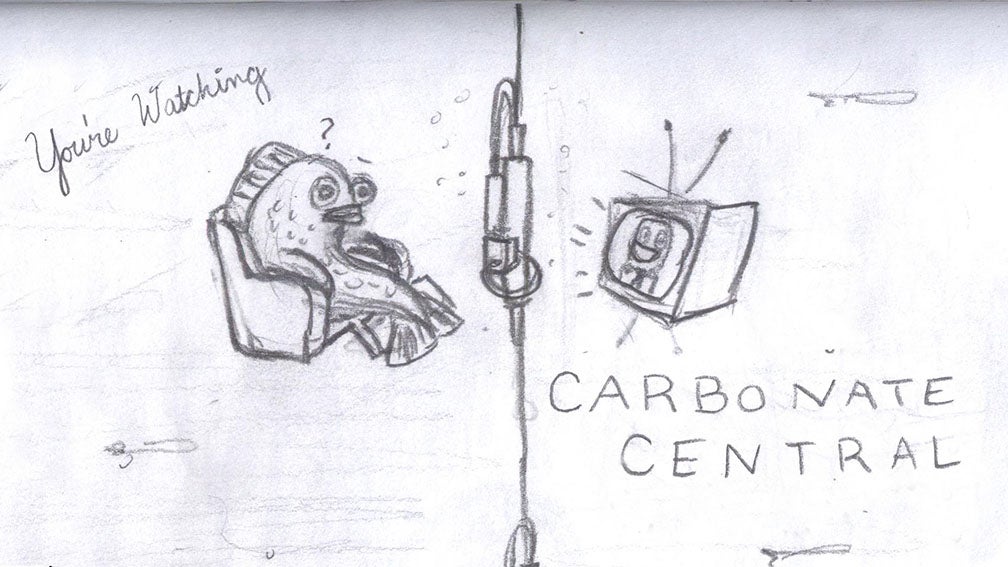
The team waits for Niskin incubators as they wrap up data collection for Station 3 and prepare to move northward.
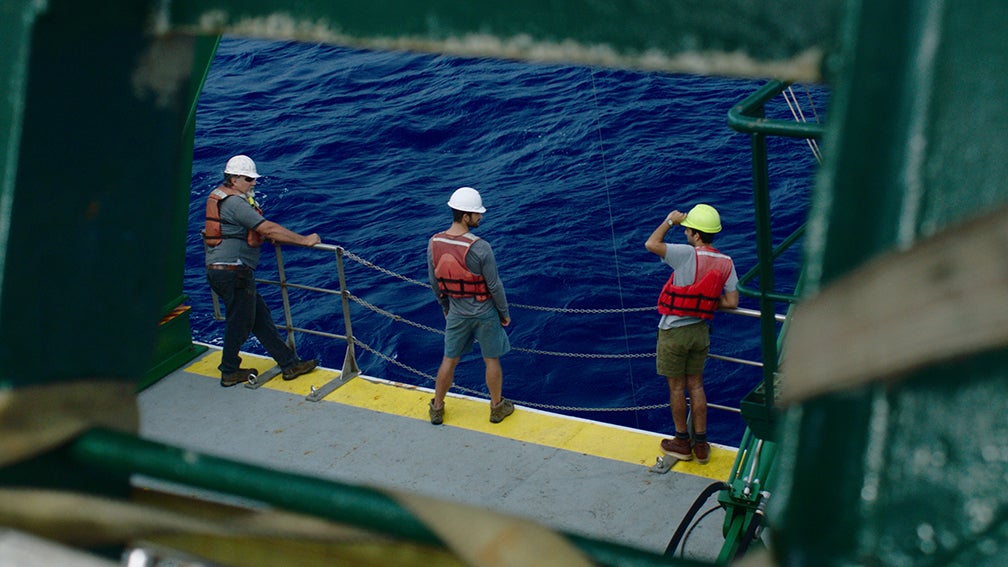
he team waits for sediment traps as they wrap up data collection for Station 3 and prepare to move northward.
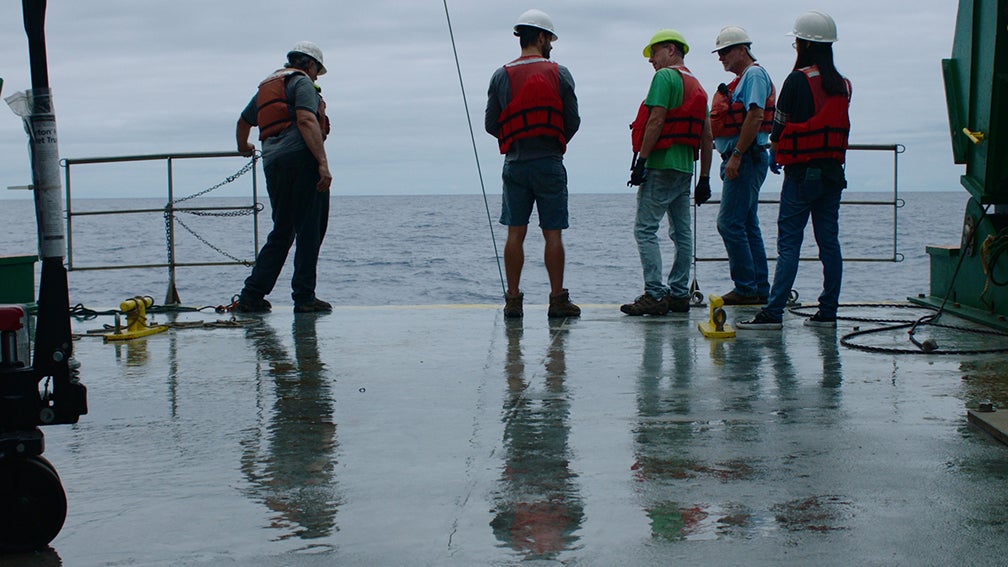
Day 16:
The team arrives at Station 4 late at night and is greeted by disoriented storm petrels that fly into things onboard. Not to be mistaken for the common pigeon, these water-faring birds get confused by the lights of ships at night and need to be released off the dark side of the ship. Here, Adam Subhas prepares to set this lost little guy back into the wild. Photo by Sijia Dong @sijiadong92
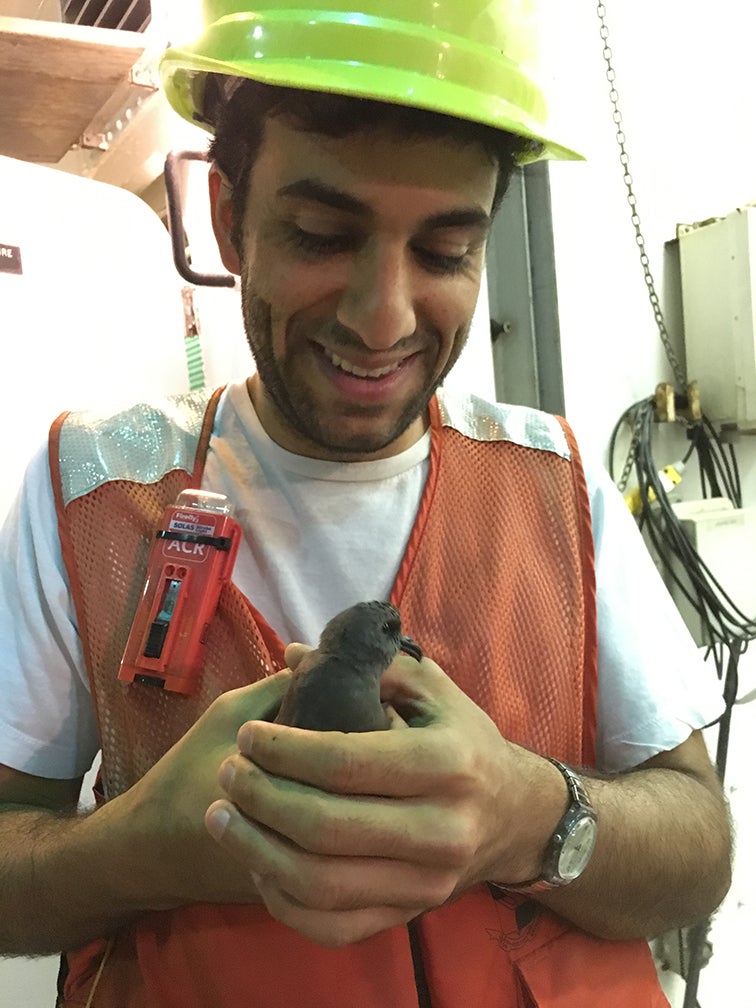
Day 19:
Having spotted the floating array that was released a day prior, the captain steers from the portside of the bridge as the Kilo Moana positions itself for retrieval. Drawing by @mfmurfie#cdiskiv
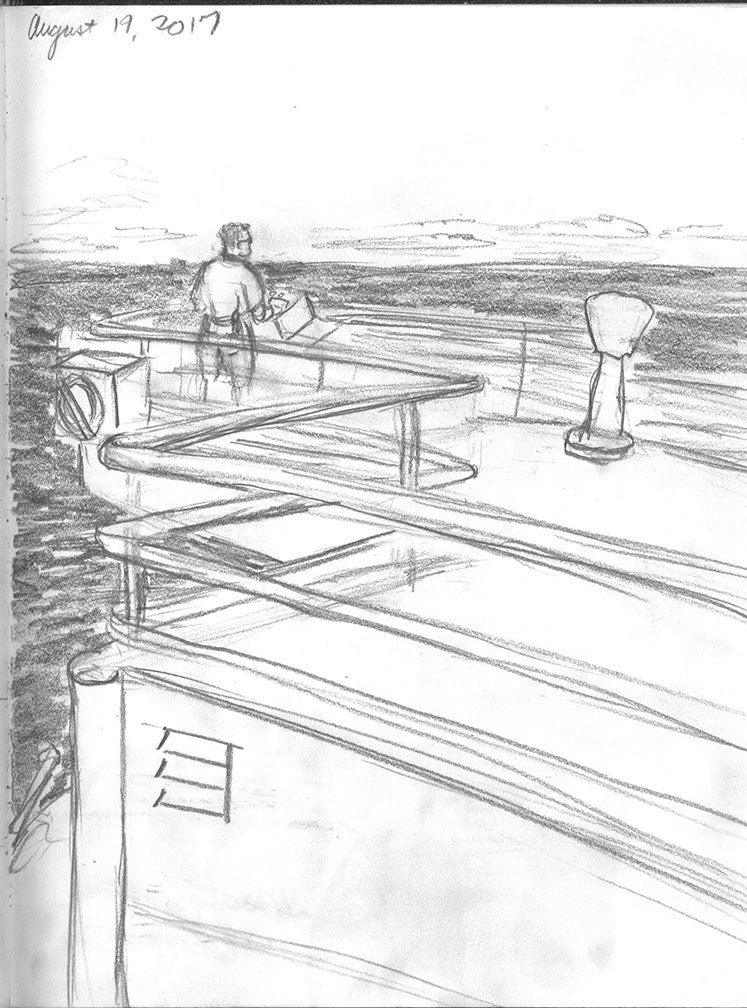
Shortly before dinnertime, the Kilo Moana begins to steam ahead for Station 5. Outreach team, Jacki Moonves (cinematographer) and Molly Murphy (animator) take in the view from the bow of the ship. What an adventure!
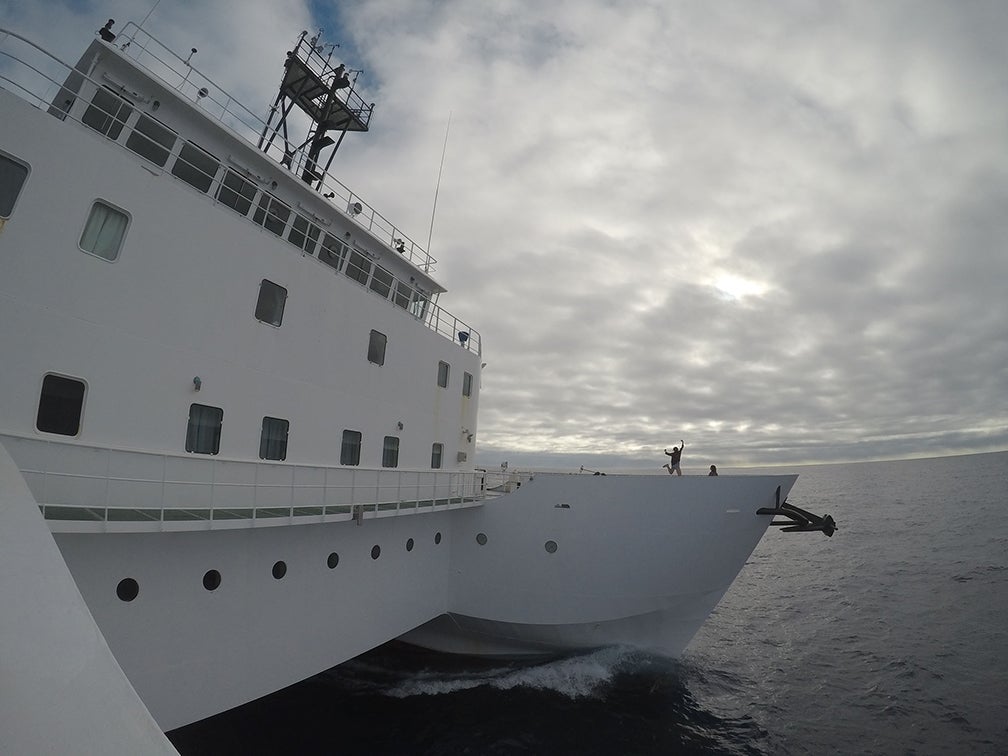
The team observes diatoms under the microscope! These photosynthetic cells are major players in the biological pump (the transport of CO2 from the atmosphere into the ocean).
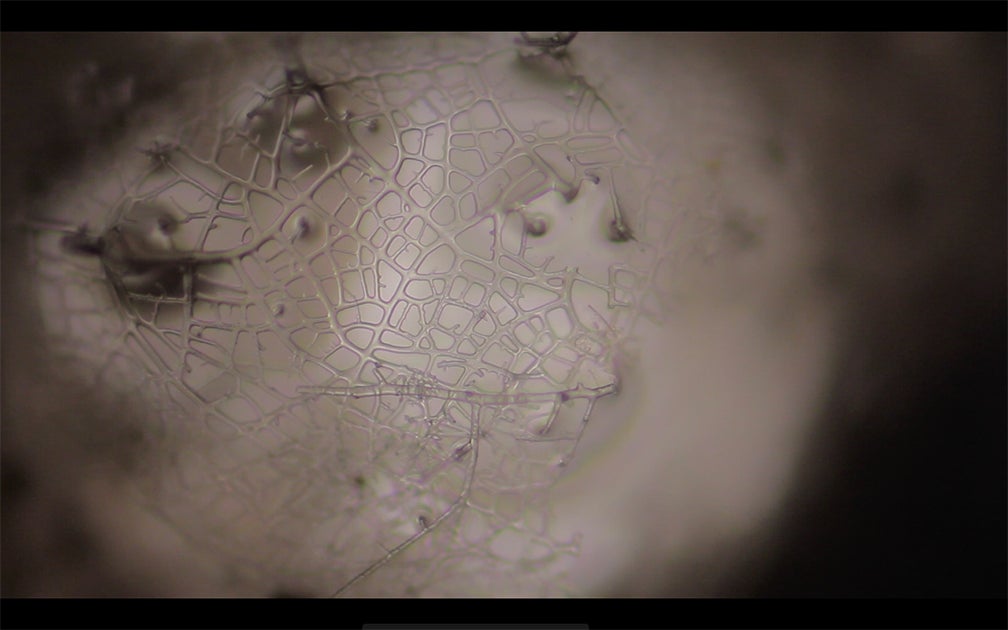
Day 20:
As the team nears 50N, they approach low pressure zones that make for some wicked weather. If you think this looks bad, the next day the ship saw 10-15 foot waves and gale-force winds! Photo by @jackimoo.dp Drawing by @mfmurfie
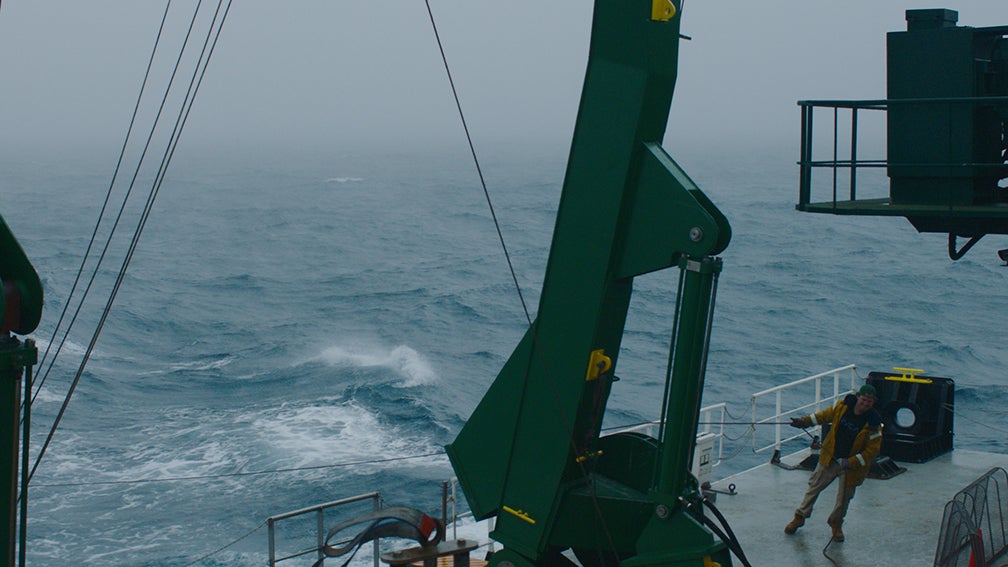
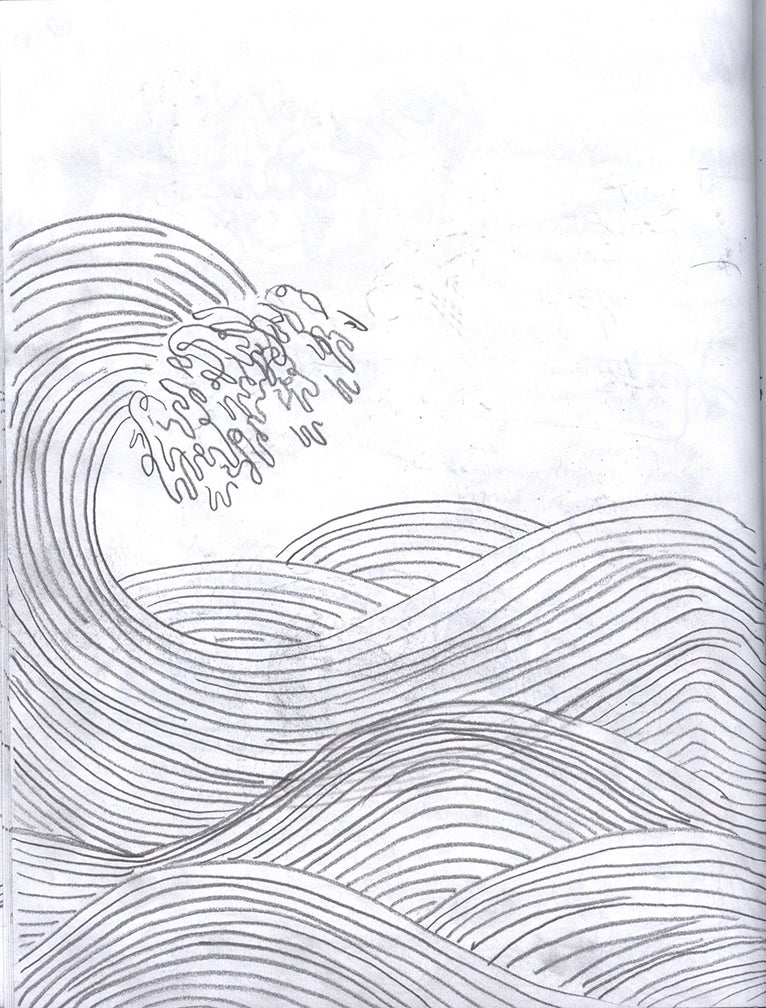
View from the mast! First Mate, James helps Jacki rig a Go-Pro to the top of the ship’s mast as the team gets ready to catch a timelapse of the solar eclipse.
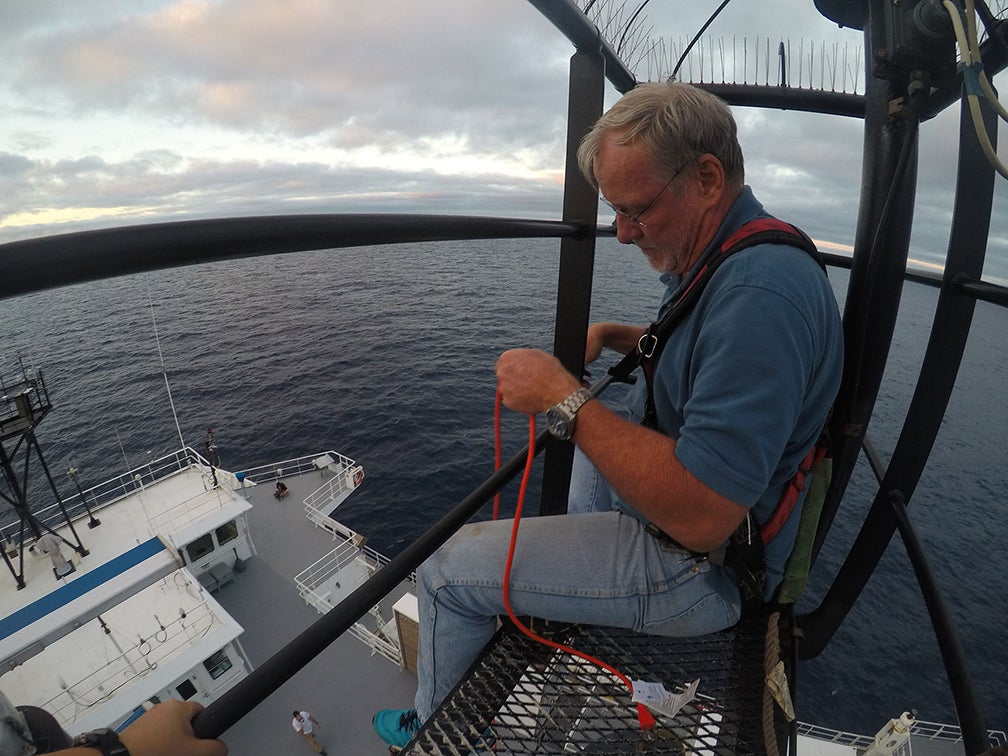
Day 21:
The team arrives at station 5 just in time to catch the solar eclipse. Skies are plagued by thick clouds and nasty weather this far north, but Captain Greg Steele manages to find a clear patch where the clouds part just in the nick of time. At 49° 48.398’ N, and 149° 37.123’ W, C DisK-IV is just in place to catch the great eclipse at 81% coverage. What’s more? Being this far out west at sea, the folks aboard the Kilo Moana were likely the first on the planet to see this!

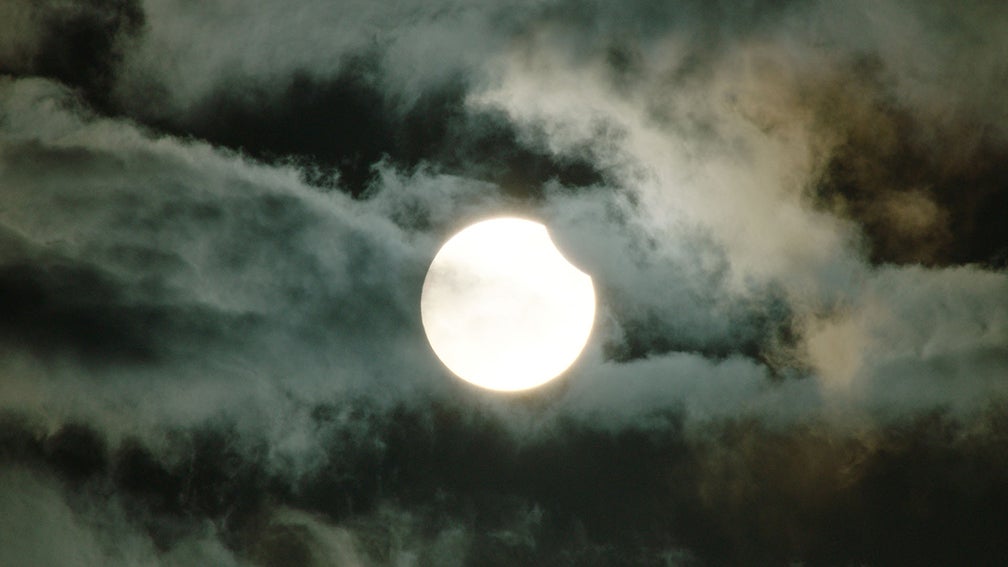
The team lucks out with nice weather for the morning eclipse but is forced to pause activity by the afternoon. Gale-force winds and 10-15 foot waves make it too dangerous to carry out deck operations.
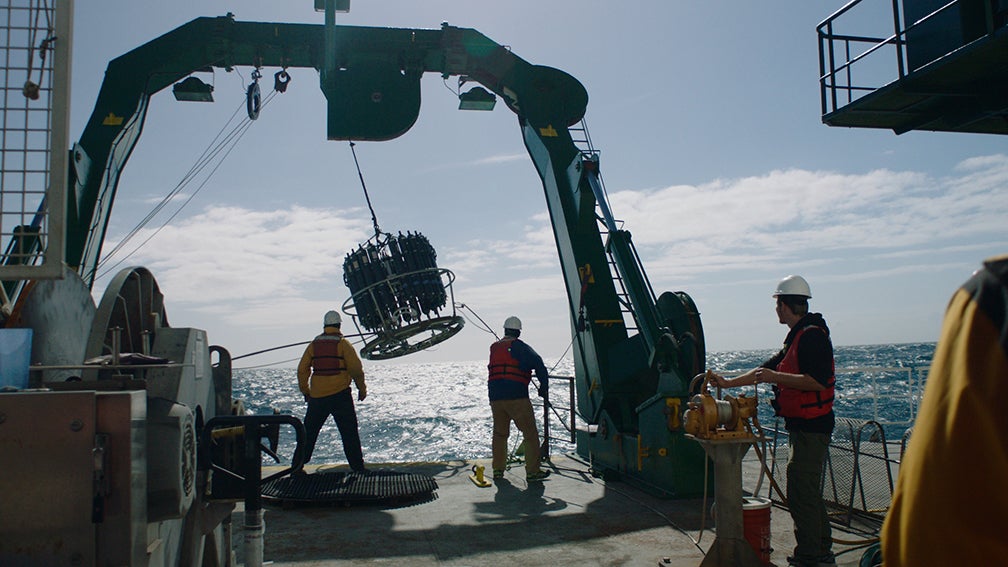
Meet Johnny Stutsman. Representing University of Washington, he works for Paul Quay studying ocean absorption of various gases. Here he poses in his lab of many contraptions.
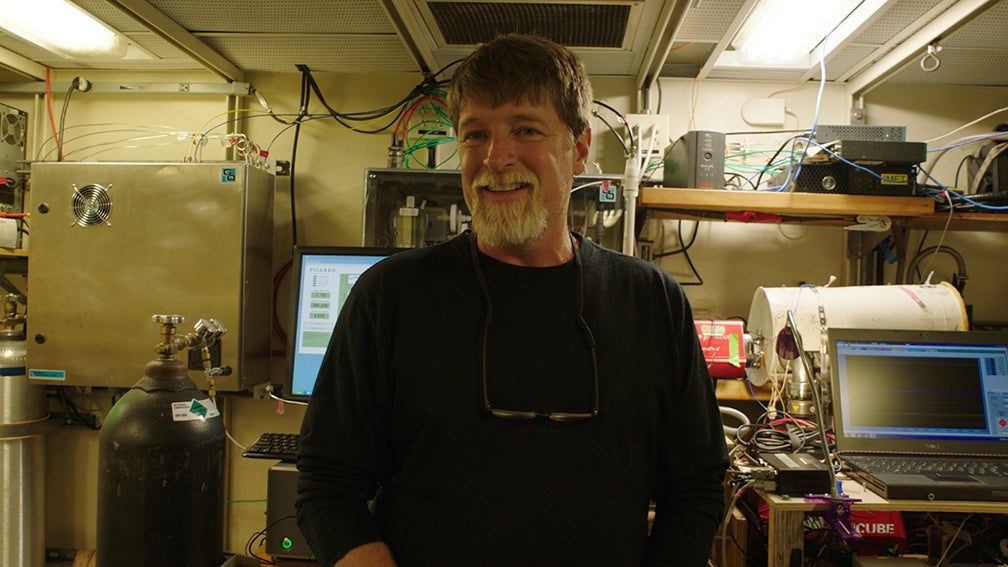
Meet Huanting Hu, also known as Dr. Hu. She is a geochemistry post-doc at Rice Unniversity studying clumped oxygen isotopes of dissolved O2 in seawater. She will use oxygen isotopes to constrain the local oxygen budget and the O2 cycling of the north Pacific.
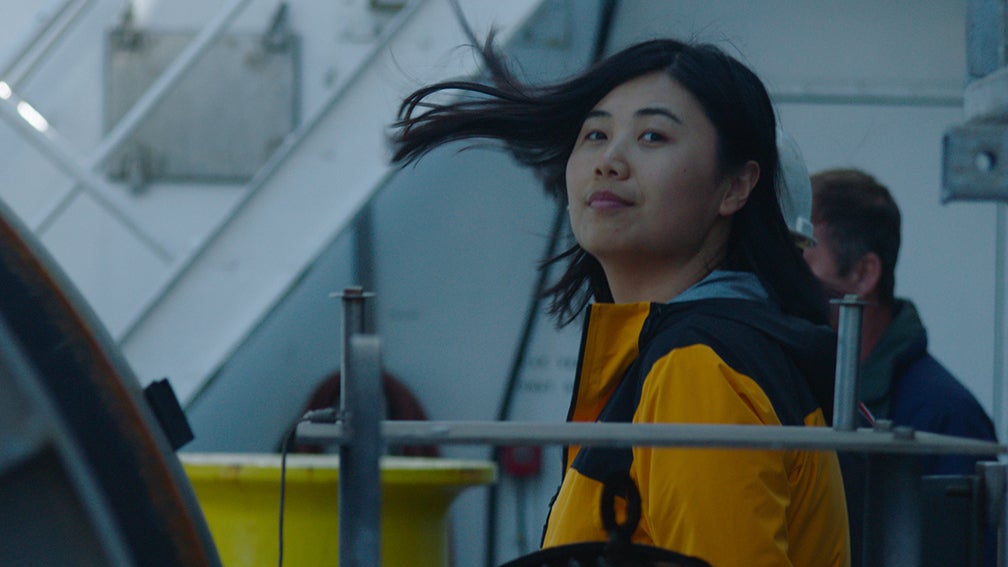
Day 23 – Day 24:
Late into the night and early into the morning, the team searches for a floating sediment trap that disconnected from its GPS locator during the storm. Having been tossed by 10-15 foot ocean waves, the tangled sediment trap poses additional challenge for retrieval. Nonetheless, the persistence of C DisK-IV sees to it that the samples are brought on board! What a team.
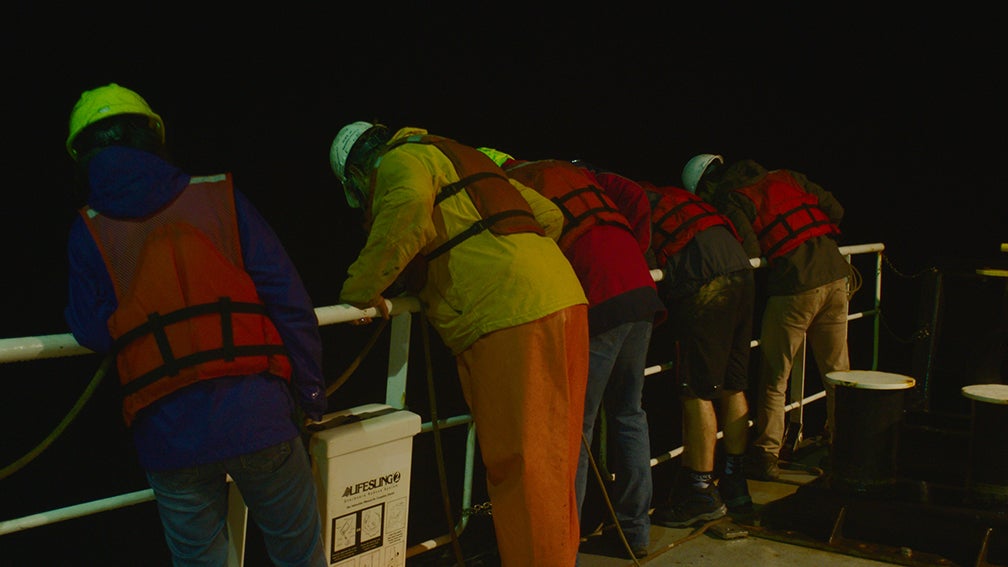
Over 3 weeks in, and chief scientists Will and Jess STILL aren’t sick of one another! Taken after a long night of searching for and eventually retrieving sediment traps these guys have done a stellar job of keeping the momentum of the mission despite its bumps along the way!
